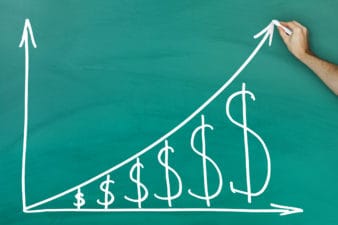Should you use a tax-free savings account (TFSA) or a registered retirement savings plan (RRSP) to invest for retirement? The short answer is both should be used when applicable as both are tax-sheltered vehicles.
Using a TFSA for retirement
Any Canadian resident who’s at least 18 years old is eligible to get a TFSA. If you have never contributed to one, you have at most $41,000 of contribution room for this year. Each year, you have until the last day of the year to contribute to it. Any unused contribution room is carried forward to the next year.
Because interest is taxed at the marginal rate, you might be tempted to place your interest-producing instruments, such as bonds and savings, in a TFSA. Personally, I like to buy high-quality stocks such as Canadian National Railway Company (TSX:CNR)(NYSE:CNI) and Enbridge Inc. (TSX:ENB)(NYSE:ENB) for their anticipated double-digit growth. They also have barriers to entry; it’s not economically profitable to build a railway or pipeline along the same route where one already exists. So, they should provide higher growth than GICs and bonds.
There’s no conflict in having multiple TFSAs. One can be for your savings account and another can be for your stocks. However, they share the same total contribution room.
Investors in lower tax brackets are especially better off investing in a TFSA until they reach higher tax brackets. However, because TFSAs are more flexible compared to RRSPs, that is, investors can withdraw from a TFSA any time without penalty, less disciplined investors may be better off investing in an RRSP for retirement.
Using an RRSP for retirement
Anyone can contribute to an RRSP as long as they have the contribution room. Though, as mentioned before, it doesn’t make much sense to contribute to it if you’re in a low tax bracket.
Using an RRSP is a great way to invest for retirement because you get taxed heavily if you withdraw from it, unless you’re taking out money for your first home’s down payment (up to $25,000) or you’re withdrawing for education (up to $10,000 per year for a lifetime of $20,000). However, to not pay any taxes on the withdrawals, you’ll need to pay them back in equal amounts over a 15-year period for the down payment and a 10-year period for the education.
An RRSP is also the perfect place to diversify into high-quality U.S. dividend stocks such as Johnson & Johnson (NYSE:JNJ) and The Coca-Cola Co (NYSE:KO) because there’s no 15% withholding tax on their dividends, while the withholding tax is applied if held in TFSAs or non-registered accounts. At least in the latter you can apply for a foreign tax credit when reporting your income tax.
In conclusion
There’s really no conflict in using both TFSAs and RRSPs to save for retirement. However, investors should be aware of their characteristics and use them as best as they can for their situations.
Everything earned inside a TFSA is tax free. So, for anyone with excess cash, it’s likely the better choice to start investing in for retirement. However, if you’re not so disciplined and you’re afraid you’ll tap into your retirement fund, then you may be better off investing in an RRSP instead.
If you’re in a higher tax bracket, you can contribute to an RRSP to bring down your tax bracket for the year, so that you’re paying less taxes now. Eventually, when you withdraw from an RRSP, which might have turned into a registered retirement income fund (RRIF) by that time, the amount will be fully taxable.
The idea is that your tax bracket is expected to be lower when you’re not earning a full income in retirement. There’s a minimum percentage investors must withdraw from an RRIF every year. And investors cannot contribute to an RRIF once it’s set up. Further, RRSPs must be converted to RRIFs by the end of year of when you turn 71 years old.








